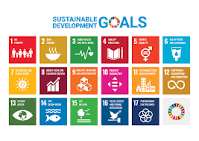FESTIVALS IN PUBLIC SPACES: COMMUNITY SPIRIT AND PARTICIPATION
There is something unmistakably alive about the way a city breathes during
a festival. A quiet street suddenly comes alive with music. A public square
that yesterday echoed only footsteps now holds a stage, a ritual, or a dance.
Stalls pop up like mushrooms after rain. Children chase balloons, elders sit in
groups retelling stories from decades past, and strangers—usually busy avoiding
eye contact—find themselves laughing in unison, swept into a celebration that
is both ancient and utterly present. In Nepal, where the calendar is generously
punctuated by festivals of many ethnicities and faiths, public spaces take on
new personalities with every celebration. They become not just venues, but
vessels of communal life.
In a time increasingly defined by private screens and individual routines,
festivals in public spaces remind us that joy can be collective, that culture
is meant to be shared, and that identity is often felt most strongly when it
spills out into the streets. Whether it is the colors of Holi flying freely in neighborhood
alleys, the loud cymbals of a Newar jatras winding through courtyards,
or the solemn lights of Tihar reflecting in every window, the streets transform
into stages of belonging. Participation is rarely passive. You are pulled in,
even if only by scent, sound, or curiosity.
What makes festivals in public settings particularly potent is the sense of
shared ownership. No one owns Indra Chowk during a jatra. No one needs a ticket
to walk with the chariot or to sit on temple steps and listen to live bhajans.
The boundaries blur—between audience and participant, between local and
visitor. People stand shoulder to shoulder, sometimes arguing, often smiling,
always present. And in that compressed proximity, differences soften. For a few
hours, caste hierarchies, political divides, and generational gaps lose their
edge. The festival levels the field. The child holding a nakkal bhailo
tin in her hands is just as central to the moment as the priest chanting at the
altar or the musician setting rhythm for the procession.
But public festivals also carry tension. Who gets to take up space? Who is
made to feel welcome, and who is left watching from the margins? In recent
years, debates over noise, traffic, religious symbolism, and commercialization
have crept into conversations around these events. As cities grow and
modernize, the collision between civic order and cultural expression becomes
more visible. Some complain about the disruption, the blocked roads, the chaos.
And yet, it is precisely in this temporary suspension of normality that
festivals draw their power. They interrupt the mundane. They say: this is a day
not like other days.
In smaller towns, the energy is even more concentrated. There, the entire
bazaar might shut down, schoolyards become fairgrounds, and the main road hosts
both a deity’s chariot and a cotton candy seller. Participation is not just
cultural; it is social currency. People prepare weeks in advance not only to
worship, but to host, to decorate, to contribute. A neighbor's home becomes
your resting spot; a stranger offers prasad without asking your name.
These are not grand gestures but quiet ones. And yet, their impact is lasting.
Community is not declared. It is practiced—shared tea, shared laughter, shared
inconvenience.
Interestingly, festivals in public spaces often reveal the hidden
caretakers of tradition. The women who organize the rituals behind the scenes,
the elderly who remember how things “used to be done,” the teenagers who build
new versions of old customs using TikTok or loudspeakers. Their collective
effort ensures that a festival is not just remembered but lived—again and
again.
There is, of course, an evolving face to these festivals. Plastic chairs
now line ancient courtyards. LED lights blink where oil lamps once flickered.
Corporate sponsors place their banners beneath centuries-old statues. And yet,
the essence holds. A festival still binds people to something larger than
themselves: a story, a faith, a history, or simply each other.
In a fragmented world, public celebrations remind us of the beauty of being
un-fragmented—if only for a moment. They are not perfect. They are crowded,
noisy, sometimes chaotic. But they are also real, raw, and deeply human. They
stitch together people who might otherwise pass one another silently on an
ordinary day.
So the next time the street fills with song or the square lights up with
ritual, pause before you pass. Step in, even if just for a moment. Let the
crowd carry you. Not because you must believe what everyone else does, but because
festivals in public spaces are not about agreement. They are about presence,
participation, and that rare, fleeting feeling that you are part of something
bigger than yourself—and, perhaps, more connected than you realized.

Comments
Post a Comment